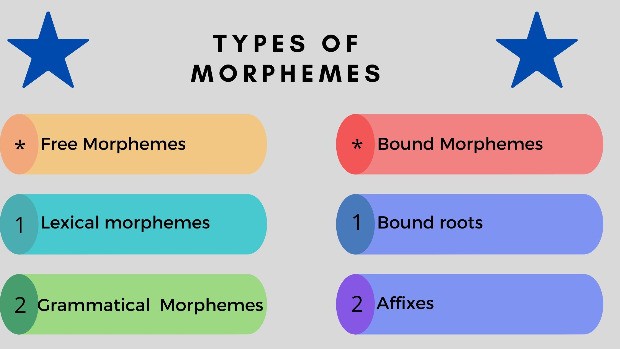Last updated on March 19th, 2025 at 09:40 am
Language is a fascinating aspect of human communication that evolves and adapts to its surroundings. Observing how language can vary across different regions is intriguing, often resulting in unique dialects. From slight pronunciation differences to distinct vocabulary and grammar patterns, dialects offer a rich tapestry of linguistic diversity.
In this article, we will explore the world of dialects in linguistics, exploring their origins, characteristics, and significance in shaping regional identities.
Dialects in Linguistics as a Branch Of Sociolinguistics
Quick Navigation
Let’s move on to the definition, origins, and major characteristics of dialects as a branch of sociolinguistics.
What Are Dialects?
Dialects refer to variations of a language spoken within a specific geographical area or by a particular social group. These variations can encompass pronunciation, vocabulary, grammar, and even syntax differences. Dialects are integral to human linguistic diversity and significantly shape regional identities and cultural heritage.
Dialects are unique linguistic expressions that emerge naturally within communities due to various social, geographical, and historical factors. They can be seen as distinct branches stemming from a common language tree, with each branch reflecting the specific characteristics of its region or social group.
Origins and Evolution of Dialects
Dialects originate in historical events, migrations, and interactions between different communities. As people move from one region to another, they bring their language with them, which gradually evolves and adapts to the new surroundings. Over time, this linguistic evolution leads to the formation of distinct dialects.
Factors Influencing Dialect Formation
Several factors contribute to the formation of dialects. Geographical barriers, such as mountains or bodies of water, can isolate communities and lead to linguistic divergence.
Historical events, such as invasions or colonization, often introduce new languages or dialects to an area, resulting in language contact and subsequent changes.
Social and cultural factors, including education, socioeconomic status, and cultural traditions, also shape the development of dialects.
Regional Variations in Pronunciation
One of the most noticeable aspects of dialects is the variation in pronunciation. Different regions may have unique ways of pronouncing certain sounds or vowels, giving their speech a distinct flavor.
For example, the Boston accent in the United States is characterized by dropping the letter “r” in certain positions. In contrast, the Scouse accent in Liverpool, England, is known for its distinctive pronunciation of vowel sounds.
Vocabulary Differences Among Dialects
Vocabulary is another area where dialects diverge. Certain words or phrases may be unique to a particular region, reflecting the local culture and environment.
For instance, in the United Kingdom, the word “biscuit” refers to a sweet baked treat, while in the United States, it commonly refers to a savory bread roll.
Grammatical Distinctions in Dialects
Grammar plays a crucial role in dialectal variation. Different dialects may exhibit variations in sentence structure, verb conjugation, or even the use of grammatical particles.
For example, using the word “y’all” as a second-person plural pronoun is common in Southern American English but less prevalent in other dialects.
The Role of Dialects in Cultural Identity
Dialects are deeply intertwined with cultural identity. They provide a sense of belonging and solidarity within a community. By speaking a specific dialect, individuals express their connection to their region’s history, values, and traditions. Dialects are identity markers, enabling a strong sense of local pride and shared experiences.
Dialects in Literature and Popular Culture
Dialects have played a significant role in literature and popular culture, enriching storytelling and character development. Writers often use dialects to accurately portray specific regions or social groups’ speech patterns and cultural nuances.
Popular culture, including movies, music, and television shows, frequently incorporates dialects to enhance realism and create authentic portrayals.
Challenges and Benefits of Understanding Dialects
Understanding dialects presents both challenges and benefits. On the one hand, dialectal variations can pose communication barriers between speakers of different dialects.
However, embracing dialectal diversity can enhance cross-cultural understanding and appreciation. Familiarity with dialects can also provide insights into local customs, traditions, and values.
Preserving Dialects in the Digital Age
In the age of globalization, dialects face the risk of diminishing or even disappearing entirely—the dominance of standardized languages and increased mobility challenge preserving dialectal diversity.
Efforts are being made to document and preserve dialects through linguistic research, cultural initiatives, and digital archives to ensure their longevity for future generations.
Dialects and Globalization
Globalization has influenced dialectal variation in numerous ways. Increased travel, migration, and media exposure have led to language contact and borrowing words and expressions across different dialects.
Globalization has also facilitated the spread of dominant dialects, often eroding regional linguistic diversity.
The Future of Dialects
The future of dialects is a subject of ongoing debate. While some argue that globalization will continue to homogenize language, others believe that dialects will persist, albeit in different forms.
These unique linguistic expressions will likely endure as long as communities value their cultural heritage and actively promote dialectal diversity.
Final Thoughts
Dialects offer a captivating glimpse into the richness and complexity of human language. They embody a region or social group’s unique history, culture, and identity.
By exploring dialects and embracing linguistic diversity, we can celebrate the beauty of language variations, foster cross-cultural understanding, and ensure the preservation of these linguistic treasures for future generations.
FAQs
Why are dialects important to study?
Dialects are essential to study because they provide insights into a region’s cultural, historical, and geographical tapestry. They help us understand the diversity of human communication and appreciate the richness of linguistic landscapes.
How do dialects develop?
Dialects develop through a combination of factors such as geographical isolation, historical events, cultural influences, and social interactions. These factors shape the unique linguistic features that differentiate one dialect from another.
Can dialects disappear?
Yes, dialects can disappear over time due to language shifts, globalization, and cultural assimilation. However, efforts to preserve dialects and raise awareness about their cultural value can help prevent their extinction.
Are dialects considered “incorrect” forms of language?
No, dialects are not “incorrect” forms of language. They are legitimate linguistic systems with their own grammatical rules and patterns. Dialects should be valued and respected as important cultural and linguistic assets.
How can I learn more about dialects?
To learn more about dialects, you can explore linguistic resources, read books and articles on dialectology, and engage with communities of different dialects. Additionally, academic courses and linguistic programs often offer in-depth studies on dialectal variation.

Azizul Hakim is the founder & CEO of englishfinders.com. He is a passionate writer, English instructor, and content creator. He has completed his graduation and post-graduation in English language and literature.




